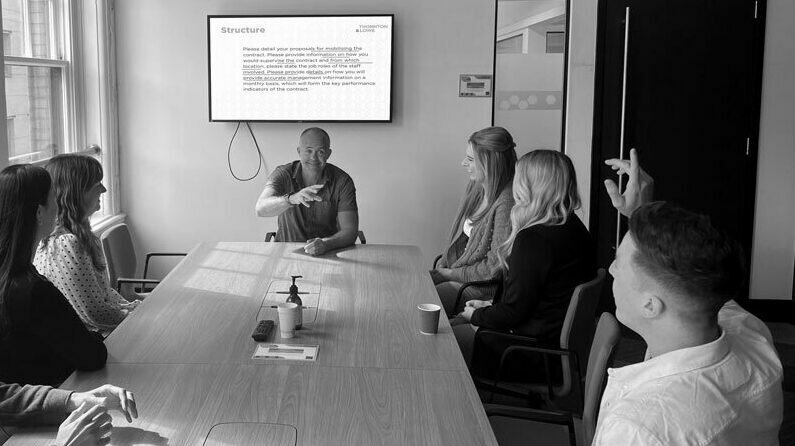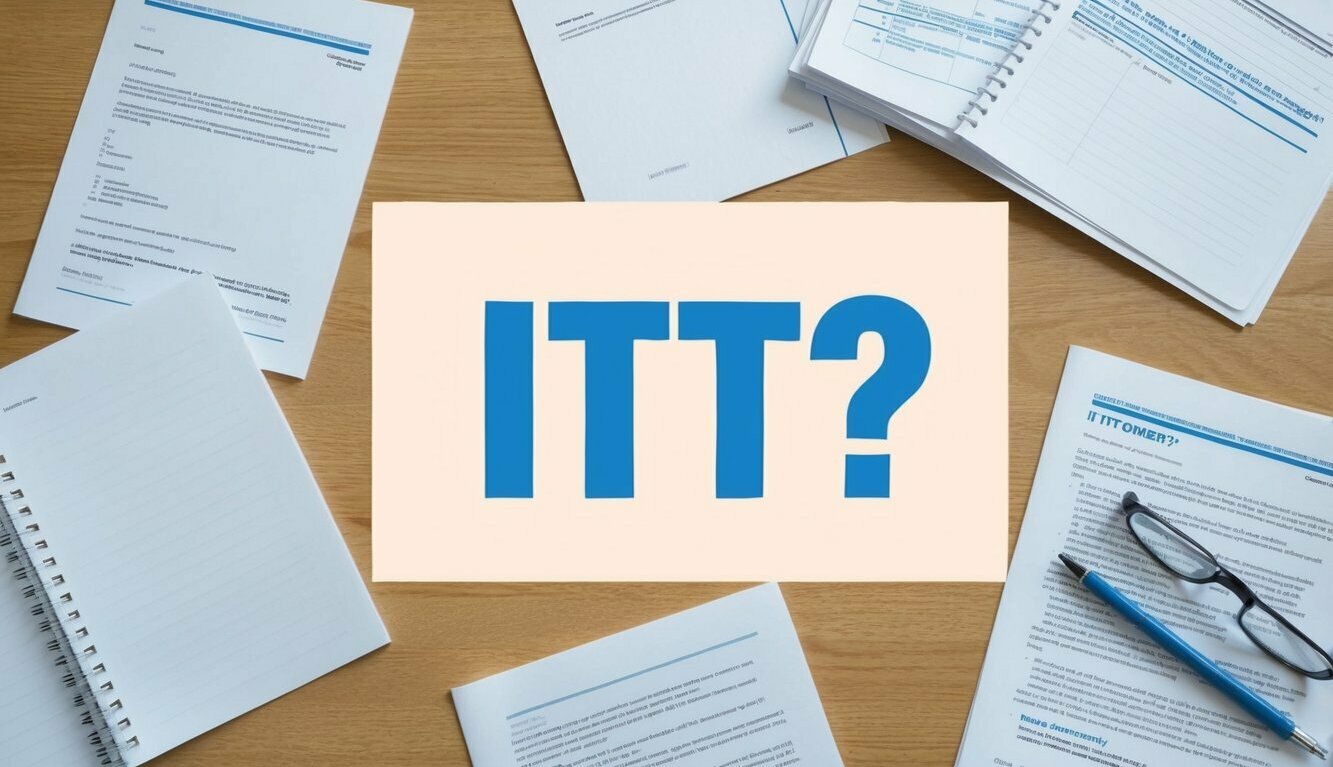At the heart of any procurement process is the Invitation to Tender. It serves as a roadmap for potential suppliers, detailing what is expected of them and how they will be evaluated.
A well-prepared ITT can help buyers to attract the best suppliers for their contracts. Additionally, an ITT can help you avoid misunderstandings and disputes later in the procurement process by setting clear expectations from the outset.
What is an ITT?
An ITT is a formal request sent out by an organisation seeking bids from potential suppliers for a product or service.
ITTs typically include comprehensive information about the requirement being tendered, such as detailed specifications, quantities, pricing format, and delivery timelines. The primary purpose of an ITT is to stimulate competition and invite offers from different suppliers. We've written a blog, ITTs Explained here!
Essential Components of an ITT
An effective ITT consists of several key components. These include the background and scope of the project, the tender submission requirements, the evaluation criteria, and the terms and conditions of the contract. Each component of the ITT serves a specific purpose and, when combined, they provide a comprehensive overview of your organisation's needs and expectations.
An ITT typically includes the following components:
Background and Overview: The background and scope provide context for the project, detailing what the buying organisation hopes to achieve. This section provides a brief introduction to the buying organisation and the purpose of the ITT. It also includes an overview of the project or contract being tendered.
Scope of Work: The scope of work outlines the specific goods or services required by the organisation. It details the tasks to be performed or goods to be provided, the expected outcomes, and any specific requirements or standards that need to be met.
Timeline: This section specifies the timescales for the project, including the start and end dates, any key milestones, and deadlines for the submission of bids.
Tender Submission Instructions: Detailed instructions on how to submit a tender are provided, including the format and content of the bid, any specific documentation required, and the procedure for submitting the tender.
Evaluation Criteria: The evaluation criteria section outlines how bids will be assessed and the relative importance of different factors. This could include price, quality, delivery timescales, and supplier experience and capacity.
Terms and Conditions: This part of the ITT includes the proposed terms and conditions of the contract. These terms should be clearly stated and not open to negotiation after the submission of bids.
Budget and Pricing: This section provides information on the budget available for the project and specifies the format and details required for suppliers to submit their pricing proposals.
Submission Details: Here the submission process is clearly laid out. This section will also include any contract-specific information for clarifications.
Deadline for Submissions: The deadline will be clearly set out within the ITT, broken down into the date, time and method.
Contact Information: Public sector procurement opportunities allow for Clarification Questions (CQs). Within the contact information section, details for how to raise these will be listed, as well as the name, title, email, and phone number of a designated contact person.
- Confidentiality: Any confidentiality requirements for the information submitted by the suppliers will be specified within the ITT.
Speak to an expert!
Contact usTailoring ITTs to Specific Procurements
While an ITT provides a standard template, every procurement is unique, and your ITT response should reflect this.
For example, if an organisation is procuring a complex piece of machinery, the ITT might focus on technical specifications, delivery times, and after-sales service. If the procurement is for professional services, however, the ITT might focus more on the supplier's expertise, approach, and track record.
Regardless of the specifics, the ITT should always be tailored to the individual procurement. It should provide a clear and detailed overview of the buyer’s requirements, ensuring that potential suppliers understand exactly what is expected of them.
Responding to an ITT
Responding to an ITT requires careful planning and preparation. Begin by thoroughly reviewing the ITT document, making sure you understand the requirements and evaluation criteria. Then, prepare your bid, ensuring that it addresses all of the requirements and present your company in the best possible light.
When responding to an ITT, it's important to be honest and transparent. Don't promise more than you can deliver, and be upfront about any potential challenges or risks. Remember, the goal is not just to win the contract, but to deliver on your promises and build a successful, long-term relationship with your client.
Provide evidence of your capabilities through case studies or testimonials. This section should highlight your past successes and show how these experiences make you the ideal candidate for the project.
Remember, you should not just respond to the ITT but provide a compelling argument for why your company is the best fit for the project.
Common Mistakes to Avoid in an ITT
Despite being an essential business practice, responding to an ITT can be fraught with potential pitfalls. Here are a few common mistakes that suppliers often make and should avoid:
Not reading the ITT thoroughly is a cardinal sin in tendering: This oversight can lead to misunderstanding the requirements, which in turn, results in a misaligned response. Always take the time to read and understand the ITT fully.
Not tailoring your response to the specific project: Every ITT is unique, and buyers want to see that you have taken the time to understand their specific needs. Avoid generic responses and strive to personalise your proposal as much as possible.
Missing the submission deadline: No matter how impressive your bid is, it won't matter if it's not submitted on time. Be sure to plan your response well in advance and always aim to submit your proposal ahead of the deadline.
Responding to the Scope of Works
The scope of works, often the core of an ITT, is the section that outlines the tasks to be executed by the successful bidder. It typically includes a detailed description of the project, the expected outcomes, timelines, and any specific requirements.
When reading the scope of works, it's crucial to understand the buyer’s needs fully. This will ensure that your response aligns with their expectations. Take time to review the document thoroughly, make notes, and highlight any areas that require clarification.
When responding, remember that your ability to meet or exceed the buyer's requirements will be under scrutiny. Thus, it's essential to demonstrate your understanding of the scope and express how your capabilities align with the project's needs. Use concrete examples from past work to illustrate your points, and be sure to address all specifications in your response.
Should a Supplier Ask Questions in an ITT?
There's a common misconception that asking questions in an ITT might indicate incompetence or lack of experience. However, this couldn't be further from the truth. Asking questions is a sign of engagement and shows that you are committed to understanding the client's needs fully.
If there are aspects of the ITT that you find unclear, it's always better to seek clarification rather than make assumptions. This action will not only enhance your understanding but also signal to the client that you are thorough and detail-oriented.
Remember that the way you ask your questions also matters. Always be polite and professional. Make sure your questions are concise, clear, and focused, ensuring they are relevant to the ITT and reflective of your company's capabilities and interests.

ITT Quick Tips
Common Pitfalls to Sidestep
- Insufficient detail in the scope of work: Provide a clear, comprehensive description of the project requirements, deliverables, and timelines to avoid misinterpretation.
- Neglecting to include a glossary: Define any technical terms, acronyms, or jargon to ensure all bidders have a shared understanding of the ITT.
- Failing to provide a template for pricing: Include a standardized pricing template to facilitate easy comparison of financial proposals.
Crafting a Stand-Out Bid
- Demonstrate your unique value proposition: Highlight what sets your solution apart from competitors and how it aligns with the buyer's specific needs and objectives.
- Use visuals to enhance your message: Incorporate charts, graphs, and images to break up text, illustrate key points, and make your bid more engaging.
- Proofread and polish: Ensure your bid is free of grammatical errors, typos, and inconsistencies. A well-written, professional bid instills confidence in your ability to deliver.
Don't Be Afraid to Ask:
Asking questions not only clarifies the ITT but also demonstrates your proactive approach and commitment to submitting a well-informed bid. It can also give you a competitive edge by uncovering information that other bidders may have overlooked.
ITT Checklist
- Confidentiality and data protection requirements
- Criteria for variant bids or alternative proposals
- Provisions for intellectual property rights
- Requirements for subcontracting or consortia arrangements
- Guidance on bid validity period and any security requirements (e.g., bid bonds)
What Happens After an ITT
After the contract award, there may be a standstill period during which unsuccessful bidders can challenge the decision. Once this period has passed, the buyer and successful bidder will sign the contract and begin the onboarding process.
It's important for both parties to maintain open communication and a collaborative approach throughout the life of the contract. Regular progress meetings, performance reviews, and risk management sessions can help ensure the project stays on track and any issues are addressed promptly.
Remember, winning the contract is just the beginning. Delivering a successful project that meets or exceeds the buyer's expectations is the ultimate goal. By fostering a strong, productive relationship with the client, you lay the foundation for future opportunities and long-term success.
Speak to an expert!
Contact usHow Thornton & Lowe Can Help You Respond to ITTs
At Thornton & Lowe, we understand the challenges of the ITT process. Our team of experts can guide you through the process, helping you prepare a comprehensive and competitive ITT.
We can also help you respond to ITTs, ensuring that your bid is tailored to the specific requirements and evaluation criteria. With our expertise, you can navigate the ITT process with confidence, secure in the knowledge that you are putting your best foot forward in the pursuit of procurement success.
For more information, please contact us using the form below!





